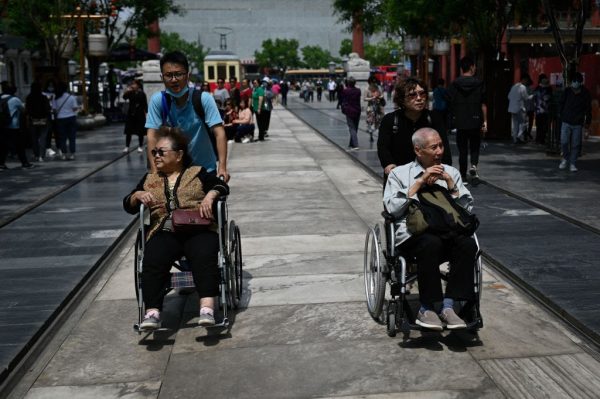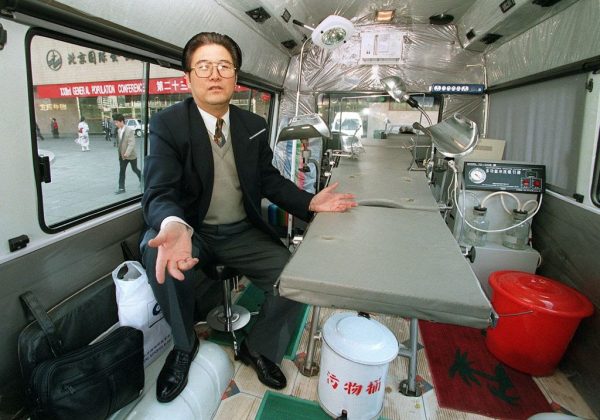Weeks after releasing the 2020 national census, Beijing has further relaxed its population control scheme, allowing married couples three children each. The family planning policy was last changed in 2016, when the infamous one-child limit was increased to two.
Many Chinese have voiced indifference to the reform, given that even having one child proves difficult amidst rising costs of living and shifting cultural expectations.
Meanwhile, observers have pointed at apparent discrepancies in the recent census data as an indication that the Chinese Communist Party (CCP) may find itself hard-pressed to cover up a severe demographic crisis.
China’s Seventh National Population Census, released belatedly in mid-May by the National Bureau of Statistics (NBS), showed that the Chinese population experienced modest growth last year, with a net increase of around 10 million people. According to the data, the country added 72 million people since 2010. NBS Director Ning Jizhe claimed China recorded 12 million births and a fertility rate of 1.3.
Delayed census
The Seventh Census began in November of 2020 and on Dec. 30, the NBS announced it had completed data collection. In March of this year, Beijing said it would announce the results in early April. An article by Financial Times citing insiders said the CCP was poised to announce its first population decline.
Success
You are now signed up for our newsletter
Success
Check your email to complete sign up
And in fact, several cities disclosed their population figures early, with at least 26 showing a negative growth rate.
Official statistics reveal China is suffering from both a shrinking workforce and an aging population. The 0-14 age bracket grew by only 1.35 percent over the course of the decade, while the 15-59 bracket, which is the meat of the population at approximately 895 million people, declined by 6.79 percent.
The 60+ and 65+ brackets, the former of which composes close to 265 million people, increased by 5.44 and 4.63 percent respectively.
According to China political risk consultancy SinoInsider, a February report issued by a CCP organ that relied on data from China’s “hukou” household registration system showed the lowest level of newborns registered in 2020 since the establishment of the People’s Republic in 1949 at 10.035 million. The number fell from 11.79 million in 2019.
The April Financial Times article quoted the Bank of China itself as saying “It is almost a fact that China has overestimated its birth rate. The challenges brought about by China’s demographic shift could be bigger [than expected].”
‘Great glorious, correct’
SinoInsider explains why population data is so critical to the psychology of Communist Party leaders and cadres both domestically and diplomatically, “The CCP needs to constantly project itself and its brutal authoritarian model as ‘great, glorious, correct’ (偉光正) to survive and dominate.”
“Externally, staying ‘great, glorious, correct’ at all times allows the Party to tout its so-called ‘China Model’ as a ‘superior’ system that other countries should follow. Domestically, being ‘great, glorious, correct’ helps the Party iron out its political legitimacy issues to a degree.”
The analysts posit the most likely reason for the delay in the release of census data was “the very real possibility that China’s population actually shrunk by a troubling amount over the past decade and especially in 2020.”
“And if the census showed that China’s population fell below 1.4 billion as reported by the Financial Times, then the CCP needs to ‘airbrush’ the final figures so that the regime can still come across as ‘great, glorious, correct’.”
A withering population and demographics is more than just an issue of saving face for the communist regime. Indeed, the data represents a serious blow to the Party’s ambition to export its autocratic ways to the rest of the world.
Moreover, SinoInsider points out population decline statistics in light of the global COVID-19 pandemic — the epicenter of which was in Wuhan city — “hints at overwhelming deaths and extensive cover-up (fraudulent official data) on the CCP’s part. This disintegrates the CCP’s narrative of having ‘controlled’ COVID-19, exposes the regime as being woefully corrupt and incompetent, and leaves the PRC vulnerable to calls for accountability by the international community.”

University of Wisconsin-Madison researcher Yi Fuxian said in his 2007 book Big Country With an Empty Nest, “The biggest problem with China’s census data is not numbers being fudged in the original data, but the adjustments in the final data. The original data is lower than expected, and the authorities have to make a sharp turn.”
Suspicious COVID statistics
While Beijing would like the world to believe its official COVID-19 death count of approximately 4,500 citizens, almost all in Wuhan’s Hubei Province, the numbers don’t add up compared to the United States at one-fifth the population but more than 590,000 COVID-19-associated deaths, or the world’s second-largest population, India’s, 329,000 deaths.
One of the most concerning datasets that may shed light on how real the pandemic in mainland China was is that of monthly new cellphone users reported by China’s big three telecoms. The mainland is a society where citizens live or die by their mobile phones in order to pay for goods and services in a cashless society and show credentials at different CCP checkpoints.
The statistics show a net 3.9 million phones went offline in November of 2019, 2.9 million in December, 1.6 million in January of 2020, and a staggering 19.4 million in February.

As a supporting piece of data, “hukou” registrations in Hubei Province dropped by more than 4.5 million people in 2020 to their lowest level since 2000.
SinoInsider says that the only two reasons for cancellations in the Hukou system “are the result of domestic and international migration, or death.”
Migration is not very likely because of both lockdowns and government controls and social prejudice and discrimination against Hubei and Wuhan migrants as people feared the spread of SARS-CoV-2.
Reaping the consequences of population control
The CCP installed its notorious one-child policy with strict enforcement starting in the 1970s. China boasted a combined fertility rate of 6.71 in the 1950s and had toppled it to 1.70 by 2019.
Over the same period of time, China’s competitors such as the United States and Britain posted fertility rate declines of 1.28 and 0.33, respectively.
With propaganda campaigns from the regime’s one-voice media apparatus featuring slogans like “have less children, have a better life,” the poison has cut deep. Figures from the Ministry of Health featuring data from 1971 to 2013 showed an astonishing 336 million abortions and 196 million sterilizations had been conducted in the country.

Facing a crisis of its own creation, the CCP relaxed its internationally-condemned one-child Policy into a two-child policy in 2016.
Yet what has been holding Chinese families from having more children back appears to be less of a matter of whether or not the CCP installs a three-child policy and more of a result of economic and social realities created over decades of communist rule..
A May 11 article by Wall Street Journal summarized the issue, “The one-child policy helped create a mind-set of focusing all of a couple’s resources on one child and many families feel they simply can’t afford a second one.”
WSJ cites an example of a 33-year-old former government employee with the surname Li who was terminated after having a third child. The local labor protection board sided with her employer because she had violated family planning policies.
Li’s expression of frustration on Chinese social media platform Weibo, “in our country, giving birth can be a sin,” summarizes the long-festering bitterness towards child rearing caused by the Communist Party’s centralized oversight of the family unit.
Beijing-based researcherJiang Xueqin told Canada’s The Globe and Mail, “Demographic trends spell the end of the Chinese Dream.”
“Young people, especially young women, do not want to have children. From a macroeconomic perspective, it is too costly and punitive.”
The article says that not only are women given a mere 14 weeks of maternity leave, with fathers usually at best two, but the average cost of raising a child in Shanghai is $160,000 before real estate.
A marketing specialist in Beijing, Bao Hui, told The Globe “raising just this one child is burning us out, me and my husband…the resources we have are barely enough for just one.”
“If I won the lottery, I would have more right away. But at the moment, our economic situation has made me give up. Because in this situation, bringing children into the world is irresponsible and unwise.”














